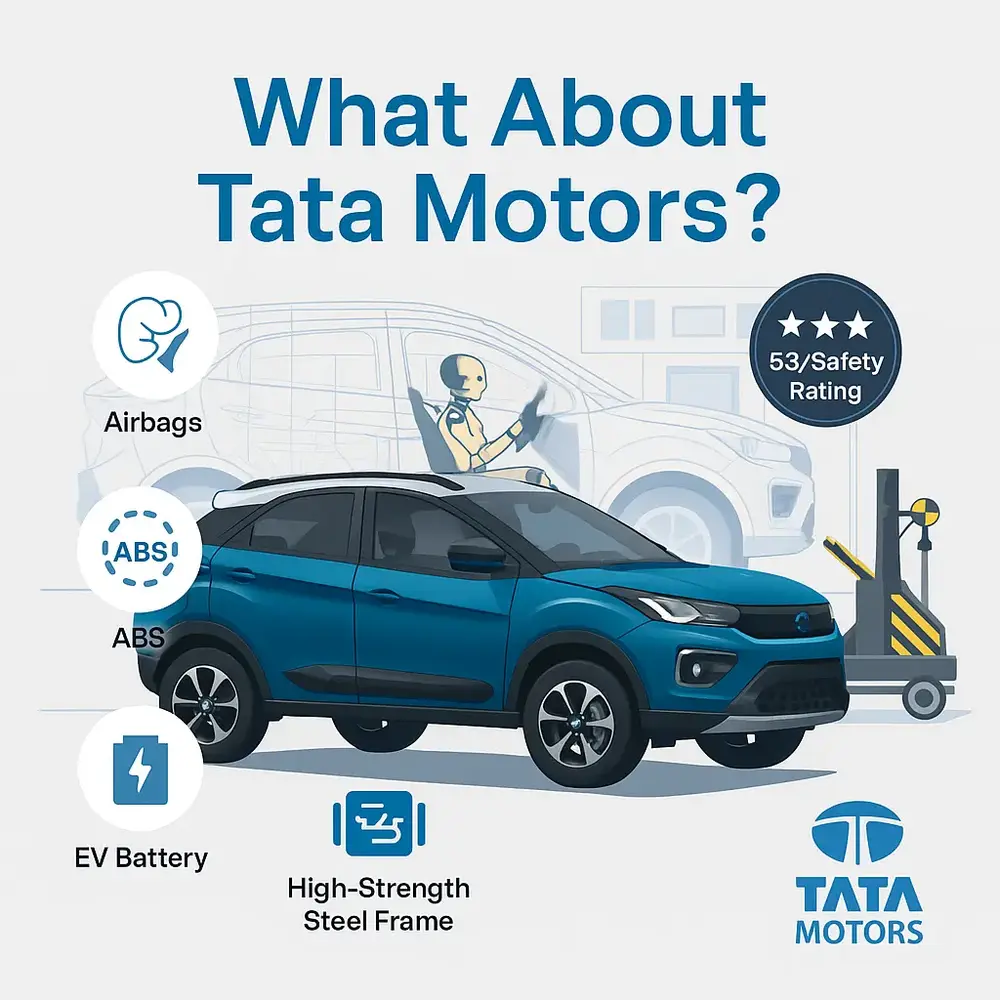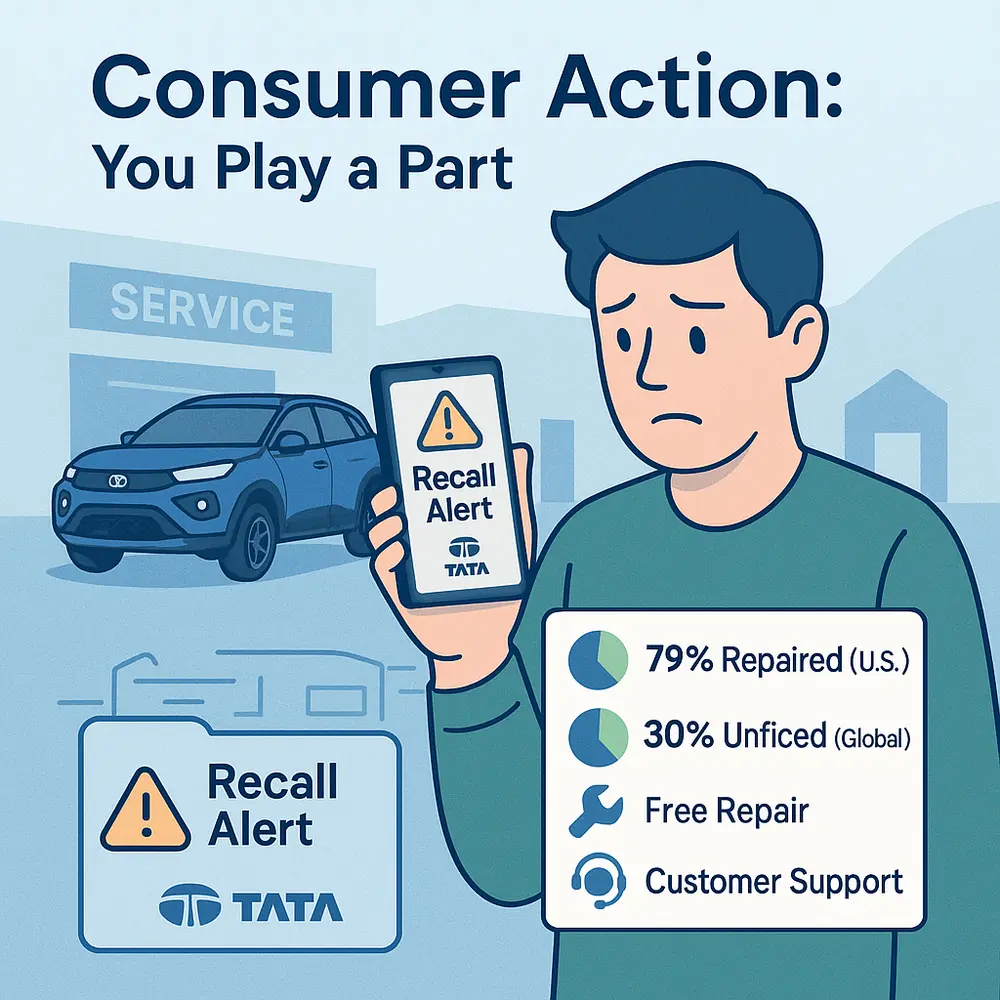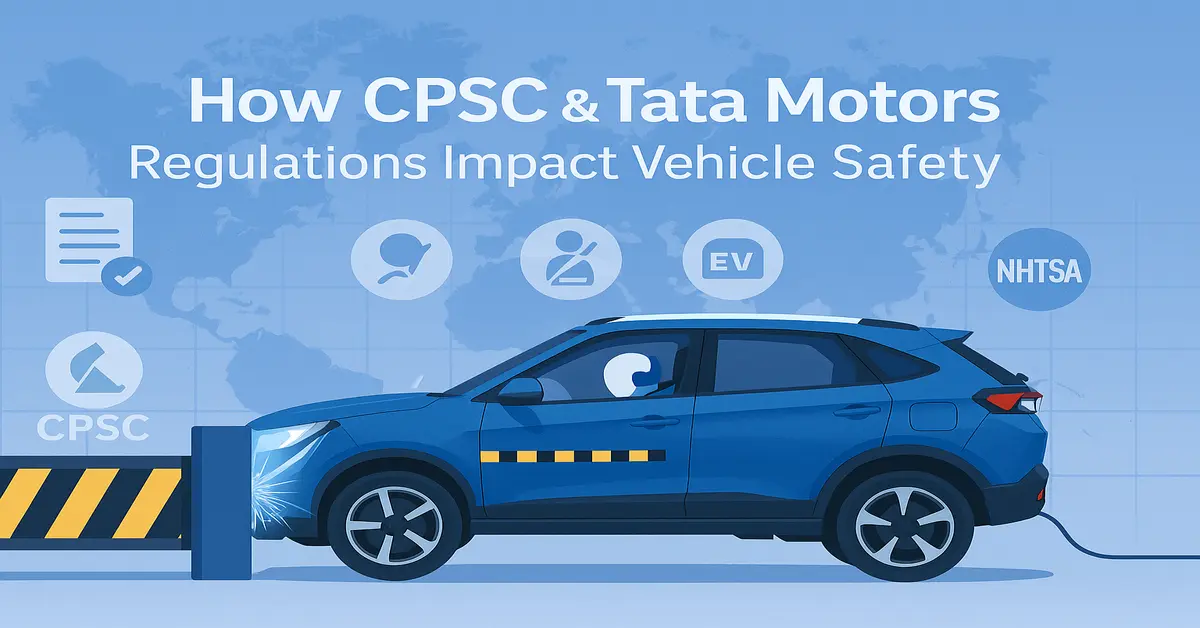When companies like Tata Motors make vehicles and U.S. When agencies like the Consumer Product Safety Commission (CPSC) and the National Highway Traffic Safety Administration (NHTSA) establish safety regulations, it leads to better protection and peace of mind for everyone on the road. Their influence extends far beyond any one country, shaping how cars are designed, built, recalled, and repaired globally. Let’s explain how this works in plain terms.
Who Are CPSC & NHTSA and What Do They Do?
In the U.S., the CPSC protects consumers by checking everyday products like toys, home goods, and even parts used in cars for safety. If something is dangerous, it orders recalls. The NHTSA, on the other hand, focuses on vehicles themselves making sure cars have basic safeguards like seat belts, airbags, and crash-avoidance systems, and ordering recalls if something’s wrong .These two agencies work in different areas but together help make vehicles safer.
Crisis in Car Safety: The Takata Airbag Recall
One of the most famous safety issues in recent history involved faulty airbags made by Takata. These airbags could explode during crashes, sending metal spikes flying and causing serious injuries or even deaths.
- Around 67 million Takata airbags were recalled in the U.S. alone, and over 100 million globally
- Investigations linked these airbags to at least 28 deaths in the U.S. and dozens more worldwide
- NHTSA urged drivers to check for recall notices and stop driving affected cars until repairs were made
This massive global effort changed how automakers design airbags, use safer chemicals, and coordinate recalls.
What About Tata Motors?

Tata Motors, based in India, manufactures popular cars and commercial vehicles. They aim to meet or exceed international safety standards, driven partly by global regulators like NHTSA and consumers who care about safety.
They have:
1. Crash test labs and ratings
Tata set up a crash test center in Pune in the late ’90s and now tests cars to international standards. Some models like Nexon, Punch, and Harrier consistently score 4 5 stars in tests by GNCAP and BNCAP.
2. Global design improvements
Because safety rules in the U.S. and Europe demand airbags, anti-lock brakes, strong bodies, and later, driver assistance systems, Tata integrates these features into all its cars.
3. Synchronized recalls
When issues happen like with airbags or EV batteries Tata works with regulators around the world to fix them quickly. For example, Jaguar Land Rover (owned by Tata) recalled airbags that didn’t warn drivers properly. All of this helps Tata earn global trust, as people know their vehicles meet tough standards everywhere.
Why CPSC/NHTSA Rules Matter to a Global Car Company?
1. High standards raise the bar everywhere
When the U.S. sets strict rules, global makers including Tata bring those safety features into every market, often from production on.
2. Better data sharing
Crash tests, recall info, and safety technology insights are shared internationally. Tata can use this knowledge and even contribute data back.
3. Stronger consumer trust
If a Tata car sells well in the U.S. or Europe because it passed all tests and recalls quickly, people in other countries also gain confidence to buy it.
4. Consistent safety in EV development
Electric vehicles bring worries about battery fires and software issues. Tata follows global rules on high-voltage safety, battery integrity, and connectivity.
Real-World Examples of Safety Spillover
- Airbag technology: Post Takata, Tata standardized safer airbag inflators and digital alerts in its vehicles.
- Recall culture: Tata matches U.S. recall processes, sending owner letters, dealer fixes, and free repairs.
- EV safety: Tata tested EV battery modules, cooling, and structural design following global electric vehicle safety guidelines.
- Driver assistance: ESC, stability control, tire pressure monitors, and ADAS features rolled out to meet rising standards worldwide.
Consumer Action: You Play a Part

Regulators can mandate actions but not always ensure compliance. For instance:
- In the U.S, nearly 79% of recalled cars get fixed after outreach programs
- In other countries, study found 70% of recalled vehicles might remain unrepaired meaning risks linger.
Tata helps by sending notices, offering loans or transport, and encouraging owners to take action no matter where they’re located.
Challenges and Next Steps
There are always roadblocks:
- Aftermarket parts: Cheap airbag knockoffs may slip through, reducing safety.
- Warranty issues: Service networks need good training and parts to fix recalled cars fast.
- Regulatory gaps: Not all countries adopt new safety rules quickly, letting some unsafe cars remain in use.
- Digital threats: Connected cars face cybersecurity needs software updates, encryption, and safe over the air fixes.
Tata and regulators like CPSC/NHTSA work to close these gaps, but it requires cooperation from manufacturers, governments, and consumers globally.
Collaboration Between Governments and Automakers
- Strong vehicle safety depends on close cooperation between regulators and manufacturers.
- Governments like the U.S., India, and EU nations work with companies like Tata Motors to develop and enforce safety rules.
- Joint projects often include crash research, emission studies, and EV safety standardization.
- Tata Motors participates in global auto forums and regulatory consultations to stay aligned with international policies.
- This collaboration helps speed up the adoption of safer technologies and more consistent global standards.
- It also ensures that safety upgrades reach markets faster, protecting more drivers and passengers worldwide.
To Sum Up
The safety of today’s cars whether Tata, Toyota, Ford, or BMW is the result of joint efforts. Agencies like CPSC and NHTSA set strict safety rules and manage recalls. Automakers follow these standards and often add advanced safety features. Global sharing of crash tests and safety tech helps raise quality everywhere. Informed consumers also play a role by acting on recalls. Together, these efforts lead to safer, smarter, and more reliable vehicles no matter where they’re made or driven.



